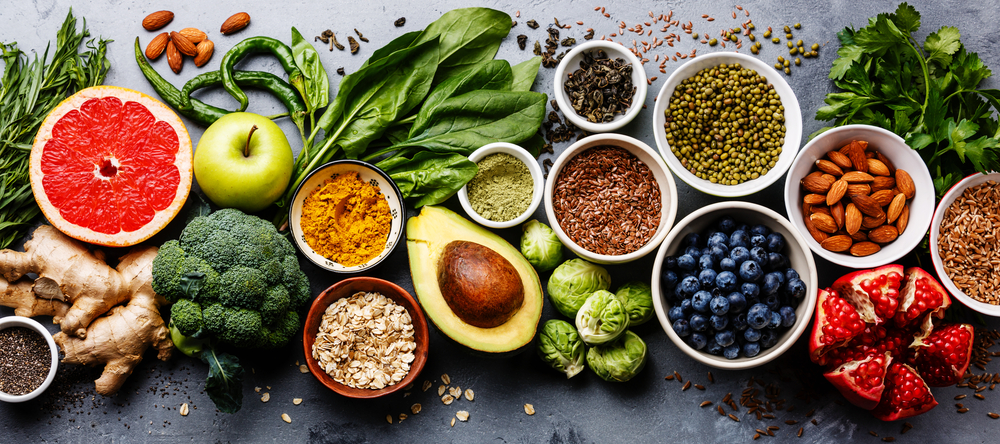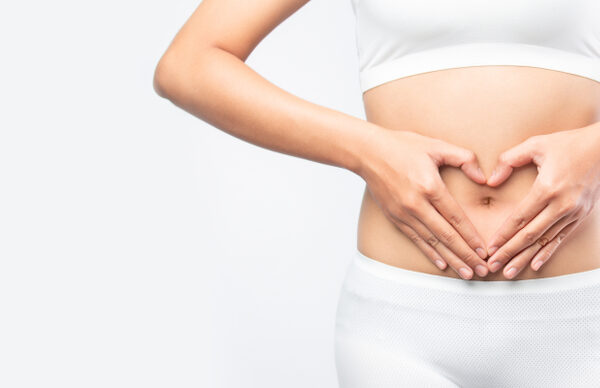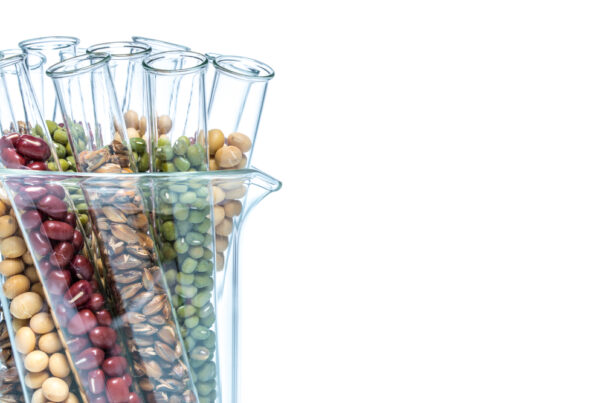An anti-inflammatory diet needs to form the basis of any treatment plan in chronic disease. All disease is associated with some degree of inflammation.
Inflammation occurs when the immune system is activated by a trigger, often infection (viruses, bacteria, yeast, fungi, mold, parasites) or a chemical exposure (metals, mercury, lead, PCB’s, POP’s, PAH’s, xenoestrogens, benzoates, petrochemicals, etc.). But inflammation can also come from everyday stress. Cortisol is produced in larger amounts when we are stressed. That is the adrenalin rush we feel that helps us cope (temporarily) with higher stress demands. But cortisol is also our body’s natural anti-inflammatory. So if you are burning through your cortisol on a regular basis due to high stress levels, eventually cortisol will drop off and the body loses it’s natural in-build mechanism to reduce or control inflammation. This allow inflammation to get out of hand and trigger all kinds of chronic health issues.
Inflammation is a normal, short-term, acute response, but when this fails to switch off it creates chronic low-grade inflammation that starts affecting other parts of your health. Some examples:
Inflammation of the Joints: Arthritis, gout, back pain
Inflammation of the Skin: Eczema, psoriasis, dermatitis, acne, pimples, rosacea
Inflammation of the Brain: Depression, sleeping disorders, mental problems, headaches, migraines, dementia, Alzheimer’s disease
Inflammation of the Gut: Irritable Bowel Syndrome, Irritable Bowel Disease, Ulcerative colitis, proctitis, diverticulitis, food intolerances, food allergies
Inflammation linked to hormones: Endometriosis, dysmenorrhea (painful periods), prostitis (inflammation of the prostate gland)
Inflammation of the Nerves: Pain syndromes, sciatica, neuritis
Obesity: Obesity is another form of inflammation. Fat cells release inflammatory cytokines triggering systemic inflammation, which is why so many chronic diseases are found in obese individuals.
Auto-immune disease: When this state of chronic inflammation continues for long enough (often over many years), it may trigger the immune system to start attacking the body’s own cells, giving rise to diabetes, SLE, thyroid disease (Hashimoto’s, Grave’s), etc.
But this is not an article about inflammation, rather how to reduce it through diet. In fact, this is how we ALL should eat ALL OF THE TIME. You could also call this diet the ‘Boost Your Brain Diet’, ‘Save Your Joints Diet’, ‘Reverse Diabetes Diet’, ‘Pain Free Diet’, ‘Hormone Balancing Diet’, ‘Fertility Diet’, ‘Auto-immune Paleo Diet’…really, take your pick.
So here is the link to our Anti-Inflammatory Food List and the Anti-inflammatory Diet food pyramid. We may have left a couple of things out, but you get the idea.
A special mention on tomatoes – unless you have an intolerance to tomatoes, try and include these for its rich lycopene content. Lycopene is a great antioxidant that reduces peroxynitrate levels, a key inflammatory marker in cardiovascular and other chronic diseases. To get the most lycopene out of tomatoes they need to be slow cooked and simmered (not eaten raw) with fat to enhance fat-soluble lycopene content. Think tomato soup, tomato sauce, pasta sauce, etc. Word of caution on commercial tomato sauce and paste products – old mouldy tomatoes are often used in commercial production of sauces, so try and make your own as much as possible from ripe (not old) tomatoes.
WATER
Water needs to be filtered to remove chlorine and fluoride at the very least. Tap water generally has a pH of around 6 which is acidic whereas springwater in nature would have a pH closer to 8. Aim to drink around 2L of water per day. You may find that as your inflammation decreases you’ll need less water to stay hydrated. This is because water is used to remove waste from the body. If you had to choose between tap water and water in a plastic bottle, choose the tap water. As much as I hate to say it, the BPA and other chemicals leached into the bottled water after being exposed to heat whilst sitting in warehouses for months and during transportation in hot trucks, is going to do more damage to your health than the chlorine in tap water. In addition some brands of bottled water have shown up with pH readings as low as 2 which is highly acidic. But this doesn’t make tap water good. The best option would be to invest in a good water filter and carry it in a glass container.
FIBER
Reducing the grains from your diet will not leave you constipated if you eat lots of vegetables and resistant starches. One reason why grains keep the bowel moving is because it is an irritant, not because it’s good for you. Add fibers like psyllium husks, LSA (Linseed, Sunflower seed, Almonds) or Flaxseed (Linseed) meal to your diet if you feel sluggish. It is best to purchase flaxseeds whole and grind them up fresh in a coffee grinder or blender when you need them. This preserves the omega 369 in them and ensures you are not consuming oxidized fats. Lignans in the flaxseed meal are excellent for cholesterol control, hormone balance in both men and women, reducing blood pressure, and off course reducing inflammation.
FRUIT AND VEGETABLES
Aim for no more than 2 pieces of fruit a day. There should be a lot more vegetables in your diet than fruit. Similarly when you make vegetable or green smoothies, make sure at least 2/3’s of it is vegetables and that no more than a third is made up of fruit. Don’t use too much raw spinach either as it is very high in oxalates which may contribute to inflammation and other biochemical imbalances. That doesn’t mean ‘no spinach’, just moderation. Use more kale in green smoothies rather than spinach. It contains more sulfur and less oxalates.
Create a balance between raw and cooked vegetables. Raw vegetables (salads) are more cleansing, contains more water and enzymes, whereas cooked vegetables (lightly steamed or baked) are more nourishing, warming and easier to digest. Whether raw or cooked, always try to drizzle some virgin olive oil or flaxseed oil over them AFTER they are cooked. Use ghee, lard or butter for cooking. Second choice would be coconut oil. Avoid cooking with any other fats or oils.
Fermented vegetables are also great anti-inflammatory foods. They provide probiotic bacteria and prebiotic food for gut bacteria which regulates immune function, calms an over-active immune system and consequently inflammation. Canned or commercial fermented or pickled foods are not all that great as they are often pasteurized (all good bacteria is killed off) and sugar added (usually to pickled foods). Either buy from reputable companies who do raw fermented foods, or make it yourself.
Vegetables and fruit contain lots of flavonoids and polyphenols which are all very anti-inflammatory.
NUTS AND SEEDS
Don’t make the mistake of eating too many of these. Nuts are also high oxalate foods which may contribute to pain and inflammation. It is especially a problem when you start to substitute flours for nut flours, or cow’s milk for nut milks. I really want you to get the concept of moderation and variety. You shouldn’t really be eating more than a handful of nuts a day. Buy activated nuts when you can or activate them yourself. What is activated nuts? Just nuts soaked overnight in water, drained and then dried (in the sun, low temperature oven, or dehydrator). The process of soaking nuts removes most of the phytic acid that can often bind to other nutrients (this is why it’s called an anti-nutrient) and cause bloating or cramps in some.
The same goes for seeds. Remember that seeds are not designed to be digested, but to survive the digestive tract, get eliminated through the bowel, and spread around to be fertilized and grow into a plant. Doesn’t mean you can’t eat them, but we’ve turned these foods into staples with nut and seed butters, milks, flours and meals which is not what nature intended.
FATS
Fats are very important for cellular repair, hormone production and blood sugar control. Fat on its own will not put on weight. Fat combined with sugar however (as found in donuts, ice-cream, etc.) will put on weight and fuel inflammation.
SUGAR
When coming from an average western diet that is high in sugars this needs to be the primary focus. Sugar acts like a drug in the brain and if you are truly addicted it may be overwhelming for you to try and cut the sugar as well as make a lot of other changes such as going grain-free as well. In these cases I suggest to make cutting sugar out completely as the primary focus, and it may take a couple of weeks before you get over this hump, but that’s OK. It rarely works where someone gradually tries to decrease their sugar intake. It’s like an alcoholic or a drug addict that tries to stop their behaviour by tapering down. When has that ever worked? No, in my experience it is best to bite the bullet and go cold turkey. But if that’s the only change you can handle then forget everything else and do this first. This includes any hidden sugars as well, or you’ll fail in readjusting your taste buds and get over the cravings.
Now just to clarify, I would consider white bread or any white flours, white rice, crackers or refined grains as a sugar. The moment it gets into your mouth and amylase enzymes start digesting it it turns into sugar, and it gives you the same blood sugar and insulin readings as refined sugar does. And don’t forget about the fruit juice. So don’t be fooled.
CALORIES AND BLOOD SUGAR
I want you to shift your focus away from calories towards the biochemical function of food. For too long we’ve been fed this idea that it’s all about the calories in and calories out principle. This is not entirely true. You can consume the same amount of calories in sugar and in fat and have completely different outcomes. The sugar will trigger insulin release which will create blood sugar imbalances and weight gain. The fat will suppress insulin release, maintain stable blood sugar levels and promote weight loss.
When you eat it should not be for calories, but for blood sugar regulation. Get into this mindset and you will look at food completely differently and gain control over your body’s biochemistry and hormones. Dietary regulation of blood sugar can differ from one person to another, so some may do better with more protein, some with more fat, and this could also change with different meals throughout the day. You know you’ve got it right when you can go from one meal to the next without feeling super hungry or crashing.
Caffeine can really disrupt blood sugar and hormones. It is best to avoid coffee first thing in the morning or completely if possible. Try not to consume more than 2 cups of coffee a day.
PORTIONS
Variety and moderation is key. Just eating everything on the fruit list and nothing else is not going to be such a great idea either. Try to include protein, carbohydrates and fats in every meal. Carbohydrates provide energy but on its own can also spike blood sugar and trigger insulin surges. This may contribute to inflammation and weight gain. Fat and protein act differently by reducing blood sugar and consequent insulin release. By adding fats and proteins to a carbohydrate meal, you get the energy from the carbs without the blood sugar spike.
Portions can differ depending on who you listen to, but I think in this case it may be individual for everyone. Listen to your body and see what makes you feel the best. There are genetic factors that make higher fat diets more suitable for some than others, and your microbiome (gut bacteria) can also affect how well you digest carbohydrates, fats and protein. Ultimately the Anti-Inflammatory Diet will improve these factors over time by increasing your microbiome diversity and changing the expression of your genes.
A study done in Germany quite a number of years ago demonstrated that the most beneficial diet from a genetic perspective was roughly made up of equal proportions of carbohydrates, fats and proteins – 1/3 carbohydrates, 1/3 protein, 1/3 fat. Or 30% protein, 30% fat, 40% carbohydrate. It’s not necessary to weigh your food or take this too literally, but more to create a picture in your head. A lot of this is common sense and the way our ancestors used to eat.
Be realistic about portions of meals. Eat for your activity level and metabolism. Look at your plate and ask yourself, does it contain carbs, fats, protein and fiber, and minimal to no sugar. If so, then you are on the right track.
TIMING OF FOOD
Sometimes it’s not always about the amount of calories or the types of food you eat, but also the timing of when you eat what. Avoid eating less than 3 hours before bed. Ideally you should stop eating 5 hours before you go to bed. Eating too close to bedtime does not allow your body to burn any of that energy off before you sleep. This means you go to bed with lots of electrons (from food) floating around in your body which may contribute to ROS or free radical formation, cellular damage and inflammation.
When you have sweets or dessert, have it as close to main meals as possible. This is for the exact reason as described above under PORTIONS, as dessert or sweets on its own will spike insulin and inflammation. Have your dessert straight after or within 20 minutes after dinner and the fats/protein from your meal will balance out the sugar spike from the sugar.
Avoid snacking inbetween meals. Those ‘healthy’ snacks of nuts and dates are doing more harm than good. Having dates or dried fruits as part of dishes to add flavour or sweetness is OK, but on its own it acts like a sugar.
FOOD QUALITY
Buy organic wherever possible. Chemicals used in growing produce or used in processing foods will all contribute to inflammation. The whole idea of this diet is to reduce inflammation. Make sure you are not sabotaging your efforts by using poor quality substitutes.
All meat should be grass-fed. Grass-fed AND organic is even better. Grass-fed meat contains more omega 3, DHA and CLA (which is anti-inflammatory) whereas grain-fed meat contains more omega 6 (which is inflammatory). Ask you butcher, and make sure it is 100% grass-fed right up till the end. A lot of meat is labelled as grass-fed but is in fact fed grains the last week or two before slaughter to fatten them up.
Chicken should be organic. Arsenic and antibiotics are used in chicken-feed which will contribute to inflammation. Even free-range chicken will not be chemical-free. If you can’t afford organic chicken it may be a good idea to eat less chicken and more grass-fed meats or wild-caught fish.
Pesticides and chemicals concentrate in fats – in our body, in plants, in animals – so when you consume any kind of fat whether it be fat on meat, butter, cream, olive oil, nuts, avocado’s or any other kind of fat, it needs to be organic. This one there really is no negotiation on. Fats should ALWAYS be organic.
If you can’t afford to buy everything organic, but you’re willing to open your mind to it, check out the Dirty Dozen and Clean Fifteen. This gives you a guide to what foods are more likely to be heavily contaminated with chemicals. Aim to buy the produce listed on the ‘dirty dozen’ organic and you can get away with buying the ‘clean fifteen’ from the green grocer.
Also be mindful of the packaging your food is sold in. Try and avoid soft plastic wrap packaging as much as possible, as well as BPA plastics. BPS packaging is now used more and more instead of BPA, but the jury is still out whether this carries its own risks. Opt for glass (ie milk in glass bottles instead of plastic containers).
COOKING AND FOOD STORAGE
Avoid microwaves and don’t reheat food in plastic containers or plastic wrappers. Avoid teflon and non-stick pots and pans. These chemicals can leach into the food. Cook in stainless steel, glass, ceramic, or enamel coated pots. Store food in glass containers. Avoid alumina foil or gladwrap touching your food directly by using baking wax paper as an inner lining.
When you drink a take-away coffee, remove the plastic lid and sip straight from the cup. Drinking from plastic lids is a huge exposure to BPA and other chemicals found in plastics. Think about it. The plastic lid is exposed to a hot liquid before you drink it. The heat creates off-gassing which can then leach into your hot beverage. It’s such a simple change that may make a huge difference in the long run.
COMMON PITFALLS
Having fruit smoothies for breakfast – Just frozen fruit and milk is not a good meal idea. There’s no protein or fats to balance it out, esp. if you use fat-free milk as well. If smoothies is your thing, maybe use some green vegetables, oils (coconut, MCT, flaxseed, hemp seed), fiber (flaxseed meal, seeds, slippery elm) and protein (whey, sprouted rice, pea proteins) in addition to your frozen berries, blended in water, or half-milk half-water (if you can’t stomach just the water) to create a more balanced and filling meal replacement. When using protein powders, don’t use cheap meal replacements you buy at the supermarket. They often contain more carbs and sugars than is necessary. Opt for close to 80% protein powders without artificial sweeteners or sugars.
Having super green drinks – You think you are doing the right thing by blending all your green vegetables through your brand-new whiz-machine. But you could be doing more harm than good, esp. if you are adding hands-full of spinach to your mix. Spinach is designed to eat in small amounts.
A few leaves on a sandwhich? No problem.
A cup of spinach leaves in a green smoothie on a regular basis? Big problems!
This is something I lecture on a lot when I teach other health practitioners. Spinach is very high in oxalates, a compound in food that binds very strongly to minerals. That’s right. You are adding something to your green drink that is binding ALL the good minerals that you are trying to consume for better health. It ends up being a big waste of time, and allows oxalates to accumulate in your cells and tissues that have the potential to create huge health issues down the line.
Does that mean you can’t of shouldn’t be doing green smoothies? No. Just means you should leave the spinach out, and maybe opt for other choices such as moderate amounts of kale, maybe cabbage, cucumber, etc. Keep it varied.
Focusing on what you eat and not what you drink – A lot of our calorie intake these days are from the drinks we consume. Coffee’s, late’s, soft drinks, alcohol, fruit juices… Don’t let this fool you. Drinking anything else than water or herbal tea will have the same effect on your body as eating a snack or a meal, meaning blood sugar imbalances and failing to loose weight. Be honest with yourself.
SOME OTHER BASIC CONSIDERATIONS
Chew your food properly. If you swallow large chunks of food you are putting more pressure on your stomach acid, pancreatic enzymes and gut bacteria to digest your food. It also deprives your brain of exercise because you are not giving the autonomic nervous system a proper workout. This can have consequences for many other body systems.
Sit down and eat in a relaxed environment. When you eat on the run, whilst working at your desk, or in between organising the kids, you are in a stressed sympathetic response which is not conducive to digestion. When you are relaxed your parasympathetic nervous system can do its job by stimulating stomach acid and enzyme production, so you’ll have better nutrient absorption and less inflammation.
Don’t drink liquids during meal times. Even if it’s water. Liquids dilute stomach acid and make it harder to digest food. It is better to have a glass of water (room temperature) 30 minutes or so before eating. Often dehydration is mistaken for hunger and drinking water can often reduce appetite.
Listen to your body. Symptoms are the way your body communicates with you to tell you where you need to pay attention and change. When you eat something and you don’t feel that great afterwards, there’s something in the food (or attached to the food ie chemicals) that’s not harmonizing with your body at that point in time.
Trust your body. It is designed to heal itself without drugs. If you remove obstacles to health and feed the body the nutrients it needs to produce its own hormones, neurotransmitters and other building blocks, you will thrive.
Start small. If this is all too overwhelming and a big shift from where you are right now, then just start somewhere. Even small changes are better than no changes at all.
Clean out your pantry. No one has will-power 11pm at night. If it’s not in your house, you can’t eat it, so make sure you clean out your pantry and only have healthy options available when emotional eating sets in.
You can still live a little. Aim to feed your body good food 95% of the time. If you become obsessed it can impact negatively on your relationship with your friends and family, and end up doing more harm than good. It’s not an excuse to go out every weekend and go nuts, but it should be about you wanting to nourish your body and become healthy, not a health fad obsession.
Exercise. This up-regulates many antioxidant systems that will reduce inflammation, as well as keep the bowels moving through improving the Migrating Motor Complex (MMC) which will improve digestion and reduce inflammation in the digestive system.
Sleep. The process of sleeping regenerates cortisol hormones which is our natural anti-inflammatory.
NEED RECIPE IDEAS?
Here are a couple of links to websites that contain recipes based on eating foods to reduce inflammation in the body.
Epicurious: The Anti-Inflammatory Diet
Healthy Chef
Supercharged Food
Dr. Michael Mosley’s fitness and meal-plan tips
INTERMITTENT FASTING
For even better results you can combine the Anti-Inflammatory Diet with intermittent fasting. Read more about intermittent fasting at Fast your way to Good Health.
So what if you eat the foods on this list and you don’t feel that great? Then you may have an underlying health issue that needs to be looked at further such as SIBO, food intolerances, gut dysbiosis, parasites, oxalate or histamine issues, or others.




